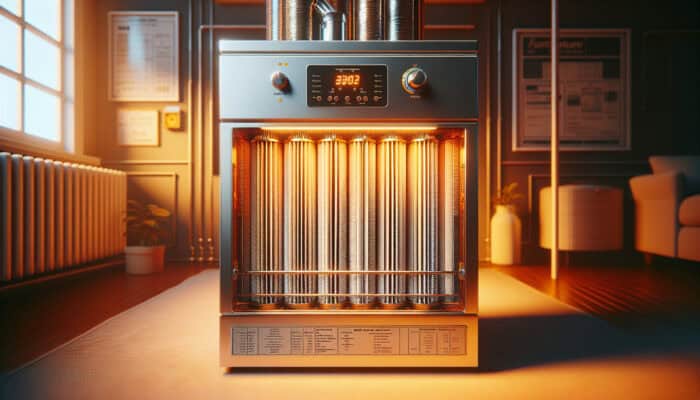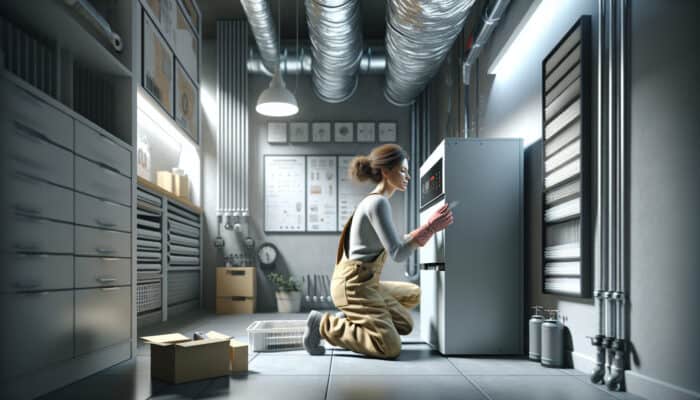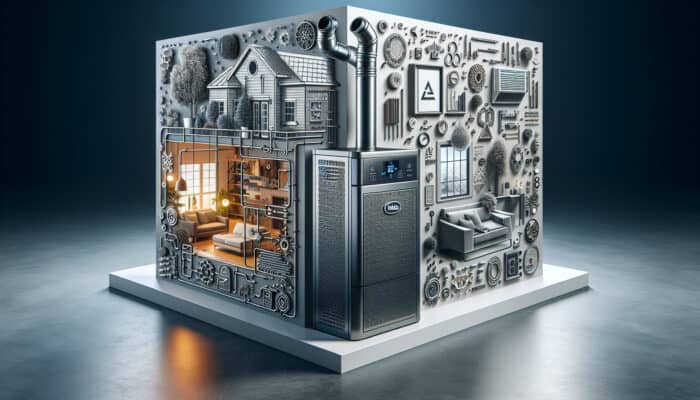Enhance Your Home's Comfort with Consistent Furnace Maintenance
Why Is Regular Maintenance Crucial for Optimal Furnace Performance?

When considering Furnace Services in Delta, the importance of regular maintenance for your furnace cannot be overstated; it is a critical requirement that significantly affects the overall efficiency and lifespan of your heating system. Neglecting maintenance can result in costly breakdowns and a surge in energy expenses, leading to much higher utility bills than necessary. Consistent maintenance provides a plethora of advantages which include:
- Enhanced energy efficiency, resulting in reduced utility bills.
- Prolonged lifespan of your furnace, thereby avoiding the financial burden of early replacements.
- Improved indoor air quality, significantly reducing allergens and dust circulation.
- Early detection of potential issues, preventing larger, more costly repairs in the future.
During the harsh Canadian winters, having a furnace that is well-maintained is essential; it is not merely a luxury but a necessity for ensuring both comfort and safety. The severe cold can be unforgiving, making it imperative that your furnace functions at peak performance levels. By investing in regular maintenance, homeowners can achieve peace of mind, knowing their heating system is far less likely to malfunction during the critical winter months when warmth is absolutely vital.
What Are the Primary Signs Indicating Your Furnace Requires Professional Servicing?
Being vigilant about the signs that your furnace needs professional servicing can help you avoid discomfort and unnecessary energy costs. Look out for these crucial indicators suggesting your furnace may require immediate attention.
Unusual sounds, such as clanging, squeaking, or grinding, may indicate that certain components are either wearing out or misaligned. Furthermore, a sudden spike in your energy bills without a corresponding increase in usage often signifies inefficiency, typically resulting from neglected maintenance. Additionally, if you notice inconsistent heating—where certain rooms are warmer than others—it may suggest possible duct issues or a malfunctioning thermostat that needs addressing.
To effectively assess your furnace’s condition, conduct a visual inspection each month. Pay close attention to signs such as discoloured pilot lights or inadequate airflow. If you notice any of these warning signs, it is crucial to act promptly. Ignoring these symptoms can lead to more serious and expensive repairs down the line. Always prioritise safety; if you are uncertain, do not hesitate to consult a qualified technician.
What Advantages Can You Anticipate from Professional Furnace Maintenance?
While undertaking DIY maintenance can be beneficial, nothing compares to the comprehensive care provided by a professional technician. Professional maintenance goes beyond merely addressing existing issues; it focuses on prevention and optimising your furnace’s performance to ensure maximum efficiency.
Imagine a scenario in which a family in Canada regularly schedules professional maintenance for their furnace. During a thorough inspection, the technician discovers a minor crack in the heat exchanger—a potentially dangerous problem if left unchecked. They are able to replace it before it leads to toxic gas leaks or total system failure. Many homeowners across Canada have saved thousands of dollars annually by investing in routine professional inspections and tune-ups.
Moreover, professional servicing can significantly enhance your home’s indoor air quality, particularly during the winter months when windows are rarely opened. Technicians will clean and replace filters, ensuring that the air circulating throughout your home is free from allergens and contaminants. This not only protects your health but also creates a more comfortable living environment.
What Is the Recommended Maintenance Schedule for Your Furnace?

To ensure your furnace operates at its best, it is imperative to stick to a seasonal maintenance schedule. This routine helps identify potential issues early and guarantees that your system functions efficiently throughout the year. Here’s a suggested timeline of tasks to follow:
– Examine and replace air filters, particularly if you have pets or suffer from allergies.
– Inspect the area surrounding the furnace for clutter or obstructions that could impede airflow.
– Test the thermostat to ensure it functions correctly.
– Check the ductwork for leaks that may be wasting heated air, a common issue that can lead to energy loss.
Annually:
– Schedule a professional inspection and cleaning to assess all components thoroughly.
– Clean the blower and combustion chamber to prevent dust accumulation, which can hinder performance.
By adhering to this maintenance schedule, homeowners in Canada can maximise their furnace’s performance and lifespan, ensuring they are well-prepared for the winter chill.
What DIY Maintenance Strategies Can Homeowners Implement Between Professional Services?
While professional maintenance is essential, homeowners can adopt proactive measures to care for their furnace between service appointments. Here are some effective DIY maintenance tips to consider:
Firstly, ensure you have the right tools at hand, including screwdrivers, a vacuum with a brush attachment, and replacement filters. Make it a habit to regularly check and change filters monthly to avoid airflow complications. Additionally, maintain a clean area around your furnace, free from debris and clutter that could obstruct functionality.
Ensure that all vents remain unobstructed to allow proper air circulation throughout your home. Inspect the furnace for visible signs of wear, such as rust or corrosion, which could indicate underlying issues. If your furnace produces unusual noises, document them and discuss these findings with your technician during their next visit, as this can expedite the troubleshooting process.
Safety should always be your top priority. Always turn off the power supply before working on any components, and consider wearing gloves and a mask while cleaning. By following these straightforward steps, you can keep your furnace in excellent condition, ensuring efficient heating throughout the season.
Current Trends and Best Practices in Furnace Services in Delta
What Are the Latest Innovations in Furnace Technology?

The landscape of furnace technology is rapidly evolving, driven by the demand for enhanced efficiency and environmental sustainability. Recent innovations have led to the development of high-efficiency models that consume less energy while delivering outstanding heating performance.
In Canada, advanced technologies such as variable-speed blowers and modulating gas valves enable furnaces to adjust their output according to the specific heating needs of a home. This precision not only improves comfort but also significantly reduces energy consumption, which is particularly appealing to eco-conscious homeowners.
The integration of smart technology represents another trend reshaping the furnace services sector. Smart thermostats allow homeowners to remotely monitor and control their furnace, optimising energy usage patterns and maximising cost savings. This shift towards technology-driven solutions is enhancing the accessibility and efficiency of furnace services across Canada, especially in urban areas like Delta.
How Can You Choose the Most Suitable Service Provider for Your Furnace?
Selecting the right furnace service provider can profoundly affect your heating system’s efficiency and longevity. Here are vital criteria to keep in mind when evaluating service providers in Delta:
- Experience: Look for companies with a proven track record in providing furnace services.
- Certifications: Ensure that technicians are certified and knowledgeable about various furnace models and systems.
- Customer Reviews: Investigate online reviews to gauge customer satisfaction levels and the quality of service provided.
- Emergency Services: Opt for a provider that offers 24/7 emergency services for added peace of mind during critical situations.
Considering these factors will help ensure you choose a provider who understands your unique needs and delivers high-quality service. A reputable provider will also offer transparent pricing and a comprehensive overview of the services performed, fostering trust and reliability.
What Is the Role of Technicians in Effective Furnace Maintenance?
Skilled technicians are the backbone of any successful furnace maintenance programme. Their expertise allows them to swiftly and accurately diagnose issues, ensuring efficient repairs and ongoing maintenance.
When selecting a technician, prioritise credentials such as certification from recognised training programmes. Inquire about their experience with your specific furnace model, as familiarity can expedite the service experience. It is also beneficial to request references or seek reviews from previous customers to gauge their reliability.
Additionally, ask about the warranty on their work, as this reflects confidence in their service quality. By conducting thorough research, you can establish a reliable partnership with a technician, making your furnace maintenance process smoother and more effective.
Recognising and Resolving Common Furnace Problems
What Factors Contribute to Common Furnace Malfunctions?
Furnace malfunctions can arise from a variety of factors, often resulting in uncomfortable living conditions and increased energy expenditures. A frequent issue is a clogged filter, which restricts airflow and forces the furnace to work harder, leading to unnecessary wear and tear on its components. Problems with the thermostat can also lead to inconsistent heating or complete heating failure.
Another common cause of trouble is a malfunctioning ignition system. This problem can prevent the furnace from igniting, rendering it incapable of producing heat. Homeowners across Canada, particularly during peak winter seasons, often encounter challenges with older furnace models that have worn-out components, resulting in premature breakdowns.
Recognising these common issues is the first step toward effective troubleshooting. Regular maintenance can often avert these malfunctions; however, if problems arise, understanding their origins empowers homeowners to take prompt action before they escalate into more serious concerns.
How Can You Troubleshoot Basic Furnace Issues Independently?
Homeowners can often troubleshoot basic furnace problems with a few simple steps. If your furnace isn’t producing heat, begin by verifying that the thermostat settings are correctly set to ‘heat’ and that the desired temperature exceeds the current room temperature.
Next, inspect your furnace filter; a dirty filter can block airflow and lead to heating complications. Confirm that the power supply is on—check the circuit breaker or fuse box to ensure there are no electrical issues preventing operation.
If the furnace still fails to function, listen for any unusual sounds, as these could indicate more serious mechanical issues. Document these symptoms and share them with your technician during your next service appointment to expedite the troubleshooting process.
- Verify the thermostat settings to ensure they are correctly configured.
- Inspect the furnace filter for clogs that may impede airflow.
- Ensure the power supply to the furnace is functioning properly.
- Listen for any unusual sounds that may indicate underlying issues.
These initial troubleshooting steps can save you time and potentially prevent costly repairs, ensuring your furnace operates as intended.
When Is It Necessary to Seek Professional Assistance for Your Furnace?
Understanding when to reach out to a professional for furnace assistance is crucial for maintaining comfort and preventing extensive damage. If your furnace fails to produce heat after you have performed basic troubleshooting, or if it begins emitting strange noises, it is time to consult an expert.
Another critical warning sign to consider is an unexpected spike in your energy bills. This often indicates that your furnace is working harder than necessary, likely due to underlying issues that require professional attention to resolve.
If you detect any signs of gas leaks, such as a sulphuric smell, evacuate your home immediately and contact a technician. Do not hesitate to call a professional for any issues that you cannot confidently address yourself; it is always better to be safe than sorry, especially during the severe winters in Canada.
How Can You Establish an Effective Preventive Maintenance Plan for Your Furnace?
Preventive maintenance is essential for prolonging the lifespan of your furnace and preventing common issues. Here are several critical tasks that homeowners in Canada should incorporate into their annual maintenance routine:
Regularly changing filters is vital; a clogged filter can severely limit airflow and efficiency. Additionally, inspect and clean the area surrounding the furnace to eliminate any obstructions that could hinder performance. Ensure that all vents remain clear and unobstructed, facilitating proper air circulation throughout your home.
Scheduling an annual professional inspection is fundamental. Technicians can identify potential problems early, addressing issues before they escalate into costly repairs. Homeowners should also familiarise themselves with their furnace’s components, noting any signs of wear or damage that may require attention.
Implementing a proactive maintenance plan can lead to a reliable and efficient heating system, ensuring comfort during the long, cold Canadian winters.
Strategies for Enhancing Your Furnace's Efficiency
What Are Effective Methods to Improve Your Furnace Efficiency?
Enhancing your furnace’s efficiency can translate into significant energy savings and a more comfortable home environment. Several straightforward actions can have a remarkable impact on your system's performance.
To begin, regularly changing or cleaning your furnace filter is one of the simplest yet most effective ways to improve efficiency. Dirty filters restrict airflow, forcing the furnace to work harder and subsequently increasing energy consumption. Sealing and insulating ductwork can also prevent heated air from escaping, ensuring that more of the produced heat reaches your living spaces effectively.
Additionally, consider the arrangement of furniture and decor in your home. Keeping vents unobstructed allows your furnace to distribute heat evenly throughout your living areas. Furthermore, scheduling regular professional maintenance enables technicians to identify inefficiencies that may go unnoticed during casual inspections.
- Change filters monthly to maintain optimal airflow and efficiency.
- Seal and insulate ductwork to prevent heat loss and improve system performance.
- Ensure all vents are clear of furniture or drapes that could obstruct airflow.
- Schedule annual professional maintenance to ensure peak performance year-round.
Implementing these straightforward tips will not only enhance your furnace’s efficiency but also contribute to reducing your energy bills over time.
How Does Insulation Affect Furnace Performance?
Effective insulation is crucial for enhancing your furnace's efficiency. In many Canadian homes, heat loss through poorly insulated walls, attics, and basements can lead to significant energy waste.
Investing in high-quality insulation can considerably reduce the operational demands on your furnace, allowing it to maintain desired temperatures more effectively. For example, homeowners who have insulated their attics often report noticeable reductions in energy costs during winter months, as less heat escapes from their homes.
In addition to standard insulation, consider utilising materials such as spray foam, which can fill gaps and provide a more airtight seal. This not only enhances overall comfort but also ensures your furnace operates as efficiently as possible. A well-insulated home improves your furnace’s performance and contributes to a more sustainable living environment.
What Are the Benefits of Upgrading to a High-Efficiency Furnace?
Investing in a high-efficiency furnace can yield substantial long-term savings and improved comfort levels for homeowners. High-efficiency models often feature advanced technology designed to maximise energy use, such as variable-speed blowers and enhanced heat exchangers.
When considering options, take note of the Annual Fuel Utilization Efficiency (AFUE) rating. A furnace with an AFUE of 90% or higher is classified as high-efficiency. Transitioning to such a model can significantly lower your heating costs, especially during the frigid Canadian winters when heating demands peak.
Before making a purchase, consult with a professional to evaluate your home’s specific heating requirements. They can assist you in selecting a furnace that meets your needs while maximising energy savings. Furthermore, many municipalities in Canada offer rebates for upgrading to high-efficiency models, providing additional incentives for homeowners to invest in energy-efficient heating solutions.
How Does Regular Maintenance Influence Efficiency?
Routine furnace maintenance is critical for ensuring optimal efficiency. Without regular checks, even the most advanced furnace may encounter problems that impede performance. A trained technician can clean and inspect vital components, ensuring they operate effectively.
Annual maintenance typically includes cleaning the heat exchanger, which can accumulate dust and debris over time. A clean heat exchanger operates more efficiently, leading to reduced energy consumption and lower utility bills. Additionally, regular inspections of the blower and motor can prevent wear and tear, allowing your furnace to run smoothly and efficiently throughout the heating season.
Homeowners should prioritise annual inspections and maintenance as a means of preserving efficiency and extending the lifespan of their heating systems.
How Do Smart Thermostats Enhance Furnace Efficiency?
Smart thermostats are transforming how homeowners manage their energy consumption, potentially leading to significant savings. These devices allow you to control your furnace remotely, enabling you to optimise settings based on your schedule and preferences.
For instance, you can program your thermostat to lower the temperature when you’re away from home, preventing unnecessary energy usage. Many smart thermostats also come equipped with learning capabilities, automatically adjusting to your heating patterns over time.
When installing a smart thermostat, ensure it is compatible with your existing heating system. Most models are straightforward to install and can provide real-time data on energy usage, empowering homeowners to make informed decisions regarding their heating habits. Embracing this technology can enhance your furnace’s efficiency and result in substantial cost savings over time.
Strategic Approaches to Furnace Services in Delta
How Can You Effectively Prepare for a Furnace Service Appointment?
Preparing your home for a furnace service visit can greatly enhance the technician’s work efficiency and effectiveness. Here are essential preparation steps homeowners should consider:
- Clear the area surrounding the furnace to allow easy access for the technician.
- Ensure all registers and vents are unobstructed to facilitate efficient airflow.
- Document any unusual noises or issues you’ve encountered to share with the technician during their visit.
- Secure pets to prevent disruptions during the service appointment.
By taking these preparatory steps, you not only facilitate a smoother process but also enable the technician to focus on the task at hand, ultimately leading to a more thorough inspection and servicing of your furnace.
Understanding what to expect during the service visit can also help you prepare relevant questions or concerns to discuss with the technician. This proactive approach ensures you maximise the benefits of your maintenance appointment.
Why Is Regular Filter Replacement Vital for Your Furnace's Longevity?
Changing your furnace filter regularly is one of the simplest yet most impactful methods to sustain your system’s efficiency. A clean filter promotes optimal airflow, reducing strain on your furnace while improving indoor air quality.
Canadian homeowners who adhere to a consistent filter change schedule often notice enhanced heating performance and reduced energy costs. For instance, one homeowner reported a significant decrease in monthly heating expenses after diligently changing their filters every month throughout the winter months.
Conversely, a clogged filter can lead to increased wear on your furnace and result in potential breakdowns. Make it a habit to check your filter at least once a month and replace it as necessary. This simple act of maintenance can yield long-lasting benefits for both your comfort and energy expenses.
What Can You Expect During a Furnace Service Visit?
Understanding the process during a furnace service visit can help you optimise your maintenance experience. When a technician arrives, they typically initiate a comprehensive inspection of your furnace, checking for signs of wear or damage that may affect performance.
The technician will clean essential components such as the blower and heat exchanger, ensuring everything operates efficiently. Additionally, they will assess the thermostat settings and may conduct tests to evaluate your furnace’s performance under varying conditions.
Homeowners should consider asking questions during the service visit. Engaging in dialogue can provide valuable insights into your furnace’s condition and any recommended next steps for maintaining efficiency. After the visit, ensure you receive a detailed report outlining the completed work, as this contributes to maintaining a reliable service history for your furnace.
Seasonal Maintenance Recommendations for Delta Residents
How Can You Prepare Your Furnace for the Winter Season?
As winter approaches, preparing your furnace is crucial to ensuring optimal performance during the coldest months. Canadian winters can be relentless, and having a well-prepared furnace can make all the difference in your home’s comfort level.
Start by scheduling a professional inspection to address any potential issues before they escalate into serious problems. During this inspection, technicians will examine critical components, including the heat exchanger, blower, and ignition system, ensuring everything is in working order.
Furthermore, homeowners should ensure that all vents and registers are clear and unobstructed. This facilitates even heat distribution throughout the home. Additionally, consider insulating any exposed pipes or ductwork to prevent heat loss. Taking these proactive measures will help ensure your furnace is ready to effectively tackle the winter chill.
What Steps Should You Take If Your Furnace Fails During Cold Weather?
When a furnace malfunctions during the frigid winter months, it can create a stressful situation for homeowners. Knowing how to respond can help keep your home safe and warm. Begin by confirming that your thermostat is set correctly and check the power supply to the furnace to ensure it is functioning.
If the power is intact and the furnace still doesn’t function, inspect for tripped breakers or blown fuses. If none of these simple solutions resolve the issue, it’s time to contact a professional technician for assistance.
In the meantime, utilise space heaters in occupied rooms to maintain warmth, but ensure they are used safely and according to the manufacturer's guidelines. Avoid using ovens or other non-heating appliances as heat sources, as this can pose safety risks. Keeping a few blankets handy and ensuring access to emergency supplies can also provide additional comfort until help arrives.
What Summer Maintenance Tasks Should You Consider for Your Furnace?
Although summer may seem like an atypical time to think about furnace maintenance, it is, in fact, an optimal season for it. During the warmer months, you can benefit from lower service demand and get ahead on necessary inspections and tune-ups.
Begin by scheduling a thorough cleaning of your furnace. Dust and debris can accumulate during the off-season, and a professional can ensure everything is in proper order. Additionally, check and replace filters as necessary to maintain airflow.
Consider testing your thermostat to confirm it operates correctly during the off-season. Some homeowners also use this time to inspect their ductwork for leaks and seal them to prevent energy loss throughout the following heating season. This proactive summer maintenance sets the stage for a stress-free heating season when winter returns.
- Schedule a comprehensive cleaning of your furnace to remove dust and debris.
- Check and replace filters as necessary to maintain optimal airflow.
- Test the thermostat for proper operation to ensure accuracy.
- Inspect ductwork for leaks and seal as required to prevent energy loss.
These steps not only enhance performance but also contribute to a longer lifespan for your heating system, ensuring it operates efficiently for years to come.
What Steps Should You Take for a Fall Furnace Check-Up?
As autumn approaches, it is essential to ensure your furnace is fully prepared for the winter ahead. A fall check-up can prevent issues that may arise during the cold season, ensuring your home remains warm and comfortable.
Start with a professional inspection to evaluate the overall health of your furnace. Technicians will clean and test vital components, ensuring everything functions efficiently and safely.
Homeowners should also inspect all vents and registers to ensure they are clear of obstructions, allowing for proper airflow and heating distribution. Changing the furnace filter should also be prioritised, as a clean filter enhances efficiency and improves indoor air quality.
Lastly, consider programming your thermostat for optimal heating schedules to ensure energy is used efficiently throughout the winter months. By taking these measures in the fall, you can ensure your furnace is fully prepared to handle the winter chill, providing reliable and efficient heating throughout the season.
Frequently Asked Questions Regarding Furnace Maintenance
How often should I schedule furnace servicing to ensure reliability?
It is recommended to have your furnace serviced at least once a year, ideally before the heating season begins, to ensure optimal performance and efficiency throughout the winter months.
What signs indicate that my furnace requires repairs or attention?
Indicators that your furnace may require repairs include unusual noises, inconsistent heating across rooms, increased energy bills, or a pilot light that appears yellow instead of blue, which can indicate incomplete combustion.
Can I perform maintenance on my furnace myself, and if so, what tasks are advisable?
Yes, homeowners can undertake basic maintenance tasks such as changing filters and cleaning the area surrounding the furnace. However, professional servicing is essential for thorough inspections and repairs that are beyond DIY capabilities.
What is the average lifespan of a furnace, and how can I extend it?
Most furnaces typically have an average lifespan of 15 to 20 years, but regular maintenance can significantly extend their life by ensuring all components operate efficiently and safely.
How do I select the best furnace for my home’s specific needs?
When choosing a furnace, consider factors such as size, AFUE rating, and specific heating requirements for your home. Consulting with a professional can provide tailored recommendations that suit your specific needs.
What steps can I take to improve the efficiency of my furnace?
To enhance your furnace’s efficiency, regularly change filters, seal ducts to prevent air leaks, and schedule annual maintenance to address potential issues before they escalate into costly repairs.
What should I do if my furnace stops working during the winter months?
Check the thermostat settings and power supply, and inspect for tripped breakers or blown fuses. If the furnace still fails to operate, contact a professional technician for assistance.
Is a high-efficiency furnace worth the investment for homeowners?
Absolutely, a high-efficiency furnace can lead to substantial long-term energy savings and improved comfort, making it a valuable investment for many homeowners, particularly in cold climates.
What maintenance tasks can I perform during the summer months for my furnace?
During summer, focus on cleaning the furnace, changing filters, testing the thermostat for proper operation, and inspecting ductwork for any leaks that may need sealing.
Are smart thermostats beneficial for enhancing furnace efficiency?
Indeed, smart thermostats can significantly enhance furnace operation by allowing remote control and scheduling, leading to energy savings and improved comfort levels within your home.
Connect with us on Facebook!
Presented By: Furnace in Delta
The Article: Furnace Services in Delta: Your Canadian Solution First Published On: https://pacificbluemechanical.ca/
The Article Furnace Services: Your Go-To Solution in Delta, Canada Was Found On https://limitsofstrategy.com


